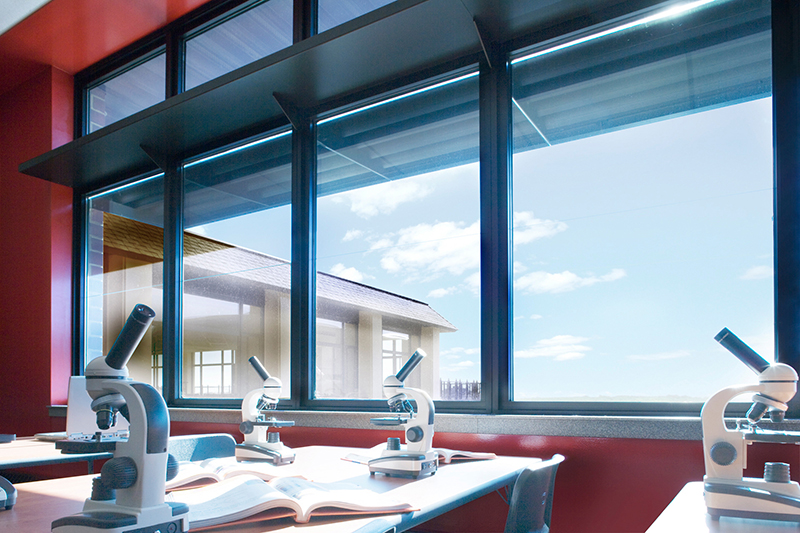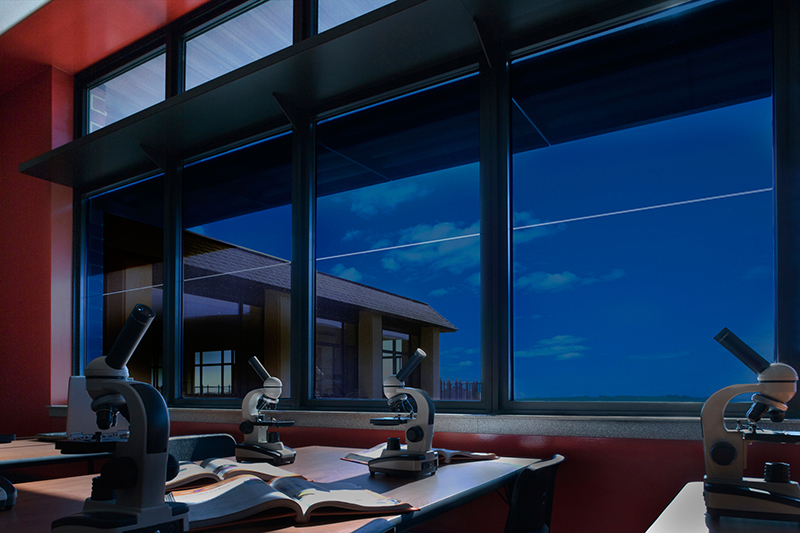3 key considerations for capitalizing on EC glass tax credits
How to make the most of the new incentives


To achieve energy improvements and emission reductions, the Inflation Reduction Act (IRA) of 2022 incentivizes building owners to use high-performance building products. The IRA’s Investment Tax Credit specifically recognizes the energy-saving benefits of electrochromic, or EC, glass. Now, glazing contractors and manufacturers are receiving increased requests for these dynamic EC glazing products.
EC improves occupant comfort, energy efficiency
Typically, EC glass has multiple, microscopic layers of ceramic material sputter-coated onto glass substrates. With the application of low-voltage DC current, lithium ions transfer layers, making the glass tint and reversing the polarity causing the glass to clear.
In commercial fenestration, EC glass controls glare, reduces heat gain and blocks ultraviolet rays, while increasing the benefits of daylighting and maintaining a connection to the view outside. EC glass can lower a building’s electric lighting use, eliminate shading devices and window treatments, and reduce heating and cooling energy loads—all helping building owners save on utility and capital costs.
How U.S. EC glass products compare
U.S. EC glass products often are similar in appearance, performance and installation, but they can differ in their construction and limitations. When comparing EC products, consider these differences
- Spacer and edge obscuration sightline
- Wiring location, diameter size and length
- Minimum and maximum glass size limits
- Switching speed
- Color matching and uniformity
Framing considerations
It is vital that the building owner and design team select and approve the EC product to be used on the building early in the design process. Some of these differences can affect the framing system design for the curtain wall, storefront, window and other fenestration.
EC glass typically is manufactured with a short pigtail exiting the insulating glass edge seal to bring DC power to the coating. The pigtail is terminated with a small connector that must fit within the glazing pocket, which can require a slightly wider frame sightline.
Installation considerations
In the field, the pigtails are connected via drop wires to control systems. The pigtail-to-drop wire connection is typically made in the glazing pocket or other frame cavity. Field wiring may require the removal of fenestration components that were factory installed, such as glazing beads or snap trim, to access the wiring. It may also be necessary for drop wires to be installed in a specific sequence with framing due to access issues. Wiring will be coordinated with the electrical subcontractor who will install and wire the control system.
To capitalize on EC, plan ahead
To successfully capitalize on the increased interest in EC, remember to plan ahead. Lead times for EC differ from standard glazing. More time may be needed to coordinate the responsibilities associated with the manufacturers, electrical contractor, architect and building owner.
With the Investment Tax Credit, building owners in the U.S. may be eligible for a 30% to 50% tax credit, which can make EC glass as affordable as low-emissivity glass. The credit applies for glass systems placed in service after Jan. 1, 2023 and beginning construction before Jan. 1, 2025. Although not new technology, it’s good to see an incentive to support building products that support sustainable initiatives.


